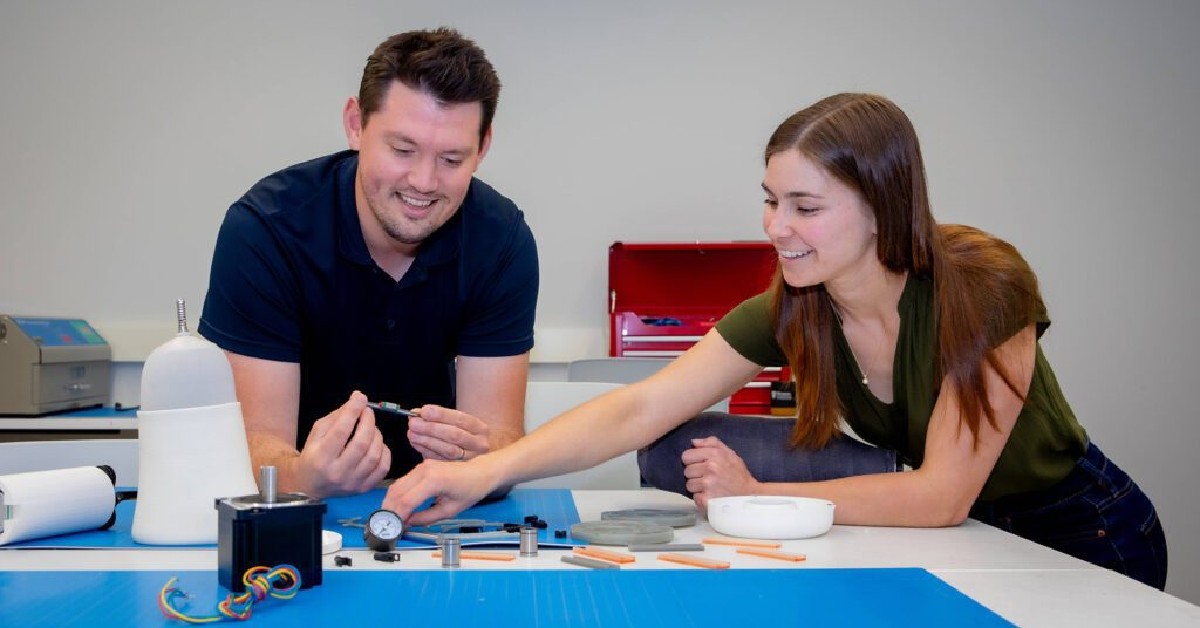Western University graduates Sydney Robinson and Oleksiy Zaika are currently putting the finishing touches on their automatically adjusting leg prosthetic.

The two met in the Medical Innovation Fellowship (MIF) program at Western, where they were assigned to observe a diabetes clinic in Hamilton.
There, they identified that diabetes is the leading cause of leg amputation and that the main concern with amputees is poor socket fit, which can be uncomfortable and lead to injury.
“Wherever their application happens to be, if it’s above the knee or below the knee, they need to put all their weight onto that surface. And that surface needs to fit just perfectly around their limbs.”
Robinson adds that even a small change in fit can cause noticeable problems.
“The amputees that we’ve spoken to have all said that they need a socket that fits absolutely perfectly, they can notice even just a one per cent change in the size of their leg relative to the socket,” she explains.
- Quebec woman wonders why she’s being asked to pay thousands for cancer medication
- From 5K to a full marathon: The best way to train for a long run
- How caregiving impacts a generation of Canadians: ‘Unpaid work does not end’
- Black youth face multiple barriers accessing mental health care, experts say
The two founded Vessl Prosthetics to develop a prosthetic that addressed the issue of poor socket fit.
Their prosthetic, called the Isoform, uses a pressure system that automatically adjusts to the limb throughout the day to maintain a tight fit without unnecessary pressure points.
Manual adjusting sockets do exist, but it requires the user to be very aware of how the socket is fitting their limb throughout the day, and if they no longer have feeling in the limb, like some diabetics, a snug fit is not able to be maintained.
“The perfect solution here is to have something that is automatically adjusting and not too expensive so that it can be reimbursed on an insurance plan, and that’s something that we are bringing to the market,” Zaika says.
The two co-founders are currently working with a group of amputees who have been providing feedback for the models they create.
“We’re really fixated on solving the problem rather than sticking by the first solution that gave us that aha moment. And as it happens in entrepreneurship, you think you have the right solution, you go to the patients, and they tell you, ‘Well, maybe these things might still need to be tweaked a little bit for this to be right.’ Then we go back to the drawing board until we have the next aha moment.”
Robinson added that amputations are only on the rise. Currently, a leg is amputated every 30 seconds worldwide.
“There are millions of people just in the United States alone, 2 million who are amputees but dozens more who are eligible for an amputation or at risk of an amputation. So this isn’t a problem that’s going away.”
The prosthetic is currently still in the product development phase, with Vessl predicting that the prosthetic will be ready and insurable by the end of 2024.




Comments